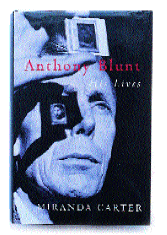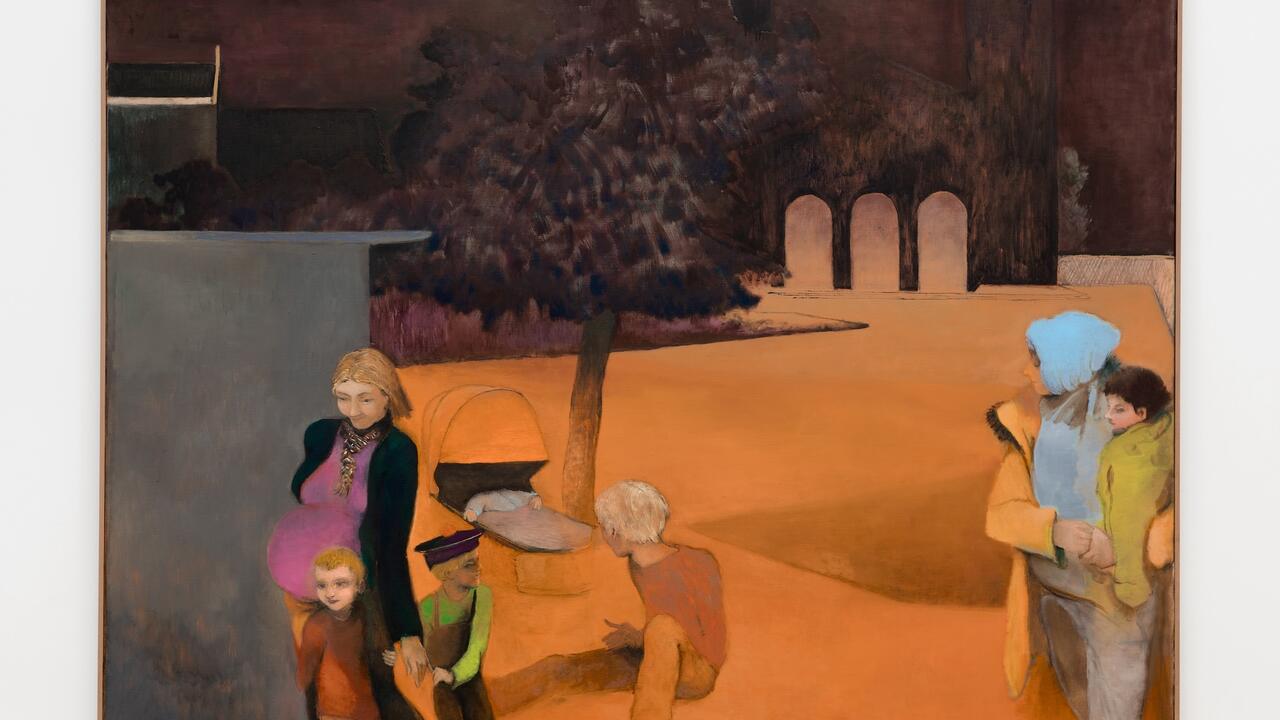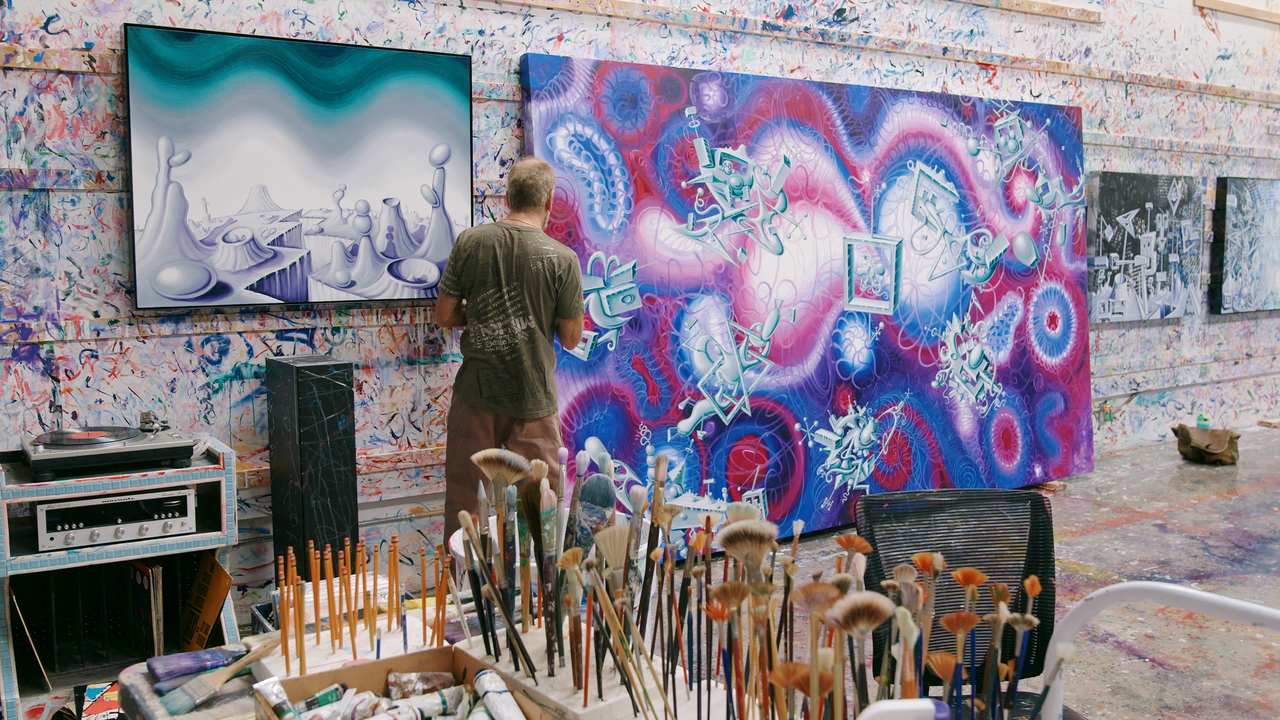Eye spy
Decoding the first biography of Anthony Blunt
Decoding the first biography of Anthony Blunt

In 1959, across a booze-laden table at the British School in Rome, an unlikely friendship was being formed. On one side sat Sir Anthony Blunt, the Director of the Courtauld Institute, Surveyor of the Queen's Pictures and Soviet spy. Opposite him was Eric Hebborn, an ex-Borstal boy studying in Rome and one of the most prolific art forgers of the 20th century.
While Hebborn flooded the art market with impeccable fakes of everyone from Giovanni Castiglione to David Hockney, Blunt concentrated on creating for himself a reputation every bit as flawless. Indeed, if a life can exist according to aesthetic rather than moral definitions, Blunt lived a masterpiece.
Miranda Carter's Anthony Blunt: His Lives (2001), the first biography to be written of the notorious 'fourth man' of the Cambridge spy ring, provides many surprises in portraying the contrary impulses of one of the 20th century's most high-profile enigmas. Although he eventually became an austere establishment figure in the art world, during his youth Blunt played a more radical role in establishing Modernism in Britain. As art critic for The Spectator in the 1930s he supported (against vociferous public opinion) the Tate's first purchase of a Pablo Picasso, wrote a pioneering appraisal of Diego Rivera's murals and championed the genius of Henry Moore.
Blunt's early writings were thick with Marxist theory. He believed Rivera's frescoes were 'the Kapital of the illiterate', applauded the Social Realism propounded by Stalin and pleaded the necessity for a 'dictatorship of the arts'. Professing propaganda art to be immediately accessible to all and thus the product of the proletariat, he scorned artists who had lost contact with their audience by striving to become recognized as individualistic creators. Blunt's defence of Soviet art policy could, however, lead him to make significant mistakes. He championed the Hungarian Marxist Peter Peri as the greatest sculptor of the age, and on first seeing Picasso's Guernica (1937) called it a 'private brain-storm which gives no evidence that Picasso has realised the political significance of Guernica'. (Fifteen years later he reconsidered and labelled it 'the last great painting in the European tradition'.)
In 1937, with civil war raging in Spain, W. H. Auden, Stephen Spender and Pablo Neruda drew up a petition proclaiming that 'the equivocal attitude, the Ivory Tower, the paradoxical, the ironic detachment, will no longer do'. Art criticism had allowed Blunt to vent his political anxieties before, but now he felt pressed to act. While some of his compatriots took to the battlefield with machine-guns and mortars, the reticent Blunt chose espionage, a means of action entirely suited to a man, as Carter writes, in whom 'almost all emotional effort was diverted into the denial of feeling'. He initially acted as a recruiter of spies at Cambridge, then began passing on secrets while working for MI5.
Yet he was by no means as committed to communism as the other members of his spy ring. A self-confessed 'paper Marxist', he had during his Cambridge days left an anti-fascist rally in Trafalgar Square early to take tea at the Reform Club. No, if Blunt was to have one guiding principle it was to be art history. Indeed, his belief in art, the 'religion without a priesthood', was at times quite overpowering. During the Second World War he was once caught in a glass-roofed gallery during a bombing raid. With typical sang froid he calmly studied a Flemish panel painting amid the roar of explosions while his colleagues cowered in a corner. When it became known that the British authorities had got wind of his espionage, he never considered defecting to the Soviet Union. Asked by his Soviet control if he wanted safe passage, he replied contemptuously that he would flee only on the condition that he would be allowed total access to the Palace of Versailles 'whenever I need to go there for my work'.
As the war progressed, Blunt's enthusiasm for spying waned and so did the affection he felt for contemporary art. He had always been uncomfortable with abstraction and now he suppressed his old exuberance and set out to become a 'serious' art historian. Under constant threat of his double life being discovered he took to his career 'as fugitives take to the hills'. He became a combination of the aesthete and the ascetic, divesting himself of all comforts except art, and was drawn towards highly intellectual subjects such as William Blake, the architecture of Francesco Borromini, and above all the work of the peintre-philosophe Nicolas Poussin, for whose present reputation he is largely responsible.
In 1964 Blunt finally confessed his double life to MI5 in exchange for immunity from prosecution, but by that time he had been knighted, accepted into court life and employed as a consultant to museums around the world. His unmasking was therefore kept secret for 15 years, until Margaret Thatcher ensured he would take a broadside of the nation's righteous indignation. He swiftly became, in tabloid parlance the 'treacherous Communist poof', 'a pansy aesthete' and the 'traitor at the Queen's right hand'. His reputation as the man largely responsible for establishing art history in Great Britain was forgotten.
Perhaps the most damning criticism came from the philosopher-critic George Steiner, who attacked Blunt's total devotion to art. Steiner, in a piece that was as much self-flagellation as anything else, pointed to the amorality of 'the scholar absolute', a creature 'cancerous with the blank holiness of the minute particular'. This complete dedication to the intellect, he suggested, was one of the main factors in Blunt's ability to separate the professional from the personal, his ability to lecture against the deceits of forgery in his professional life and yet to enact supreme falsities in his private life.
Carter does not attempt to create so complete a synthesis in her biography, preferring to portray an opacity to Blunt's character that was created by the superfluity and dissimilarity of his alter egos. Whereas Steiner ended his tract with the judgement 'Damn the man', Carter provides an altogether more sympathetic portrayal of a figure so complex that we can probably never hope to understand him completely.
W. H. Auden thought Oscar Wilde 'important not as a writer ... but as a behaver'. When one reads Carter's book, now at a safe remove from the Cold War and with the idea of treason becoming something of a historical curiosity, one is struck by the same feeling. Blunt's was a performance so skilfully articulated, so controlled and encapsulating such volatile opposites, that it was at times breathtaking in its bravado. No matter how important his work as an art historian, you feel it was Blunt's life itself that was truly his magnum opus.
























